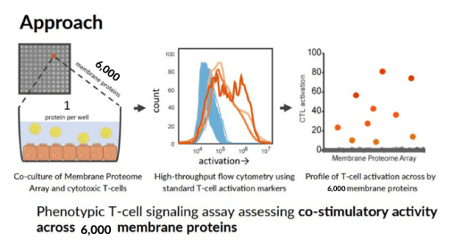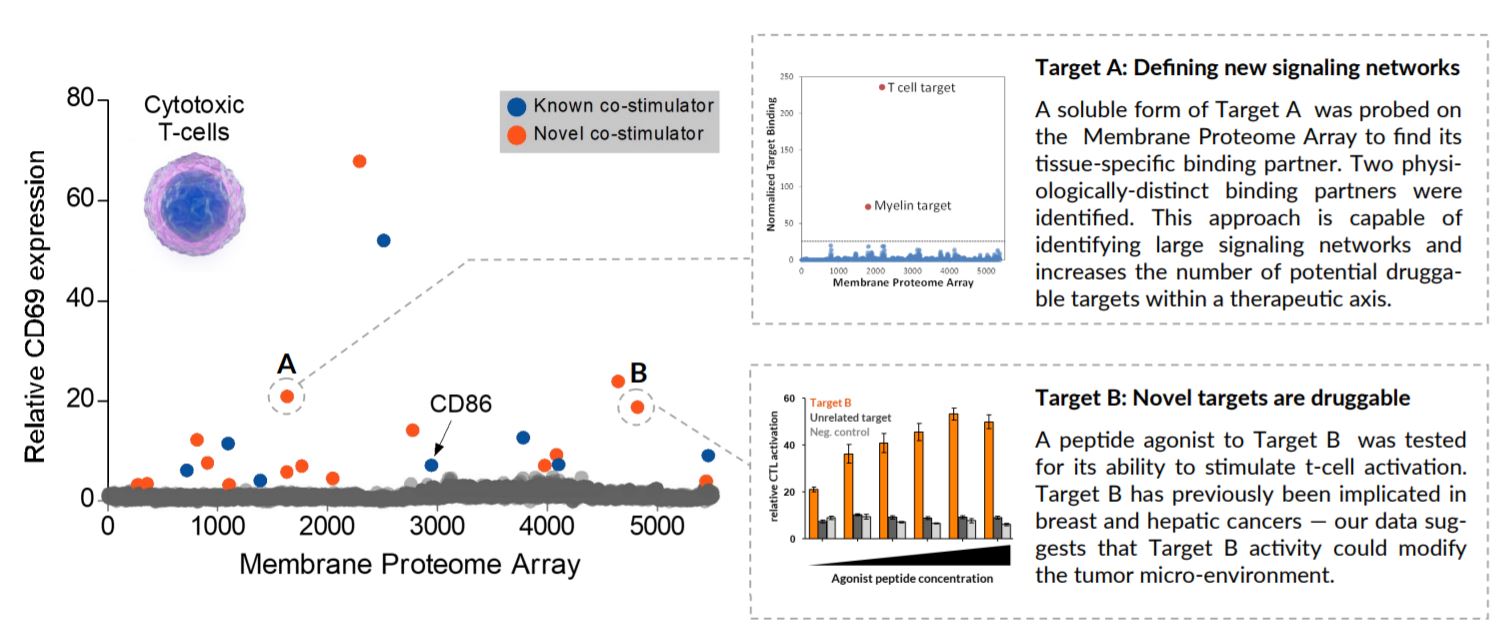Case Study: Identification of new cell surface proteins that modulate cytotoxic T-cell activation

The Membrane Proteome Array contains 6,000 human membrane proteins, each expressed in live human cells. It is the largest library of its kind, comprising 95% of the human membrane proteome with all protein classes represented — including GPCRs, transporters and IgV-set proteins.
Proteins in the array can be screened for biological function to discover new therapeutics targets.
Modulation of immune cell subsets has proven a successful therapeutic approach for treating cancers — e.g. PD-(L)1 inhibitors. However, current attempts to identify new immunomodulatory proteins rely on homology-based approaches. In contrast, the Membrane Proteome Array is ideally suited to the discovery of new therapeutic targets as each protein is expressed in its native form on the surface of live human cells, enabling signaling assays to detect functional interactions. Using this platform, we were able to discover dozens of new immuno-modulatory proteins in a hypothesis free manner — generating a list of novel druggable targets along multiple therapeutic axes.
